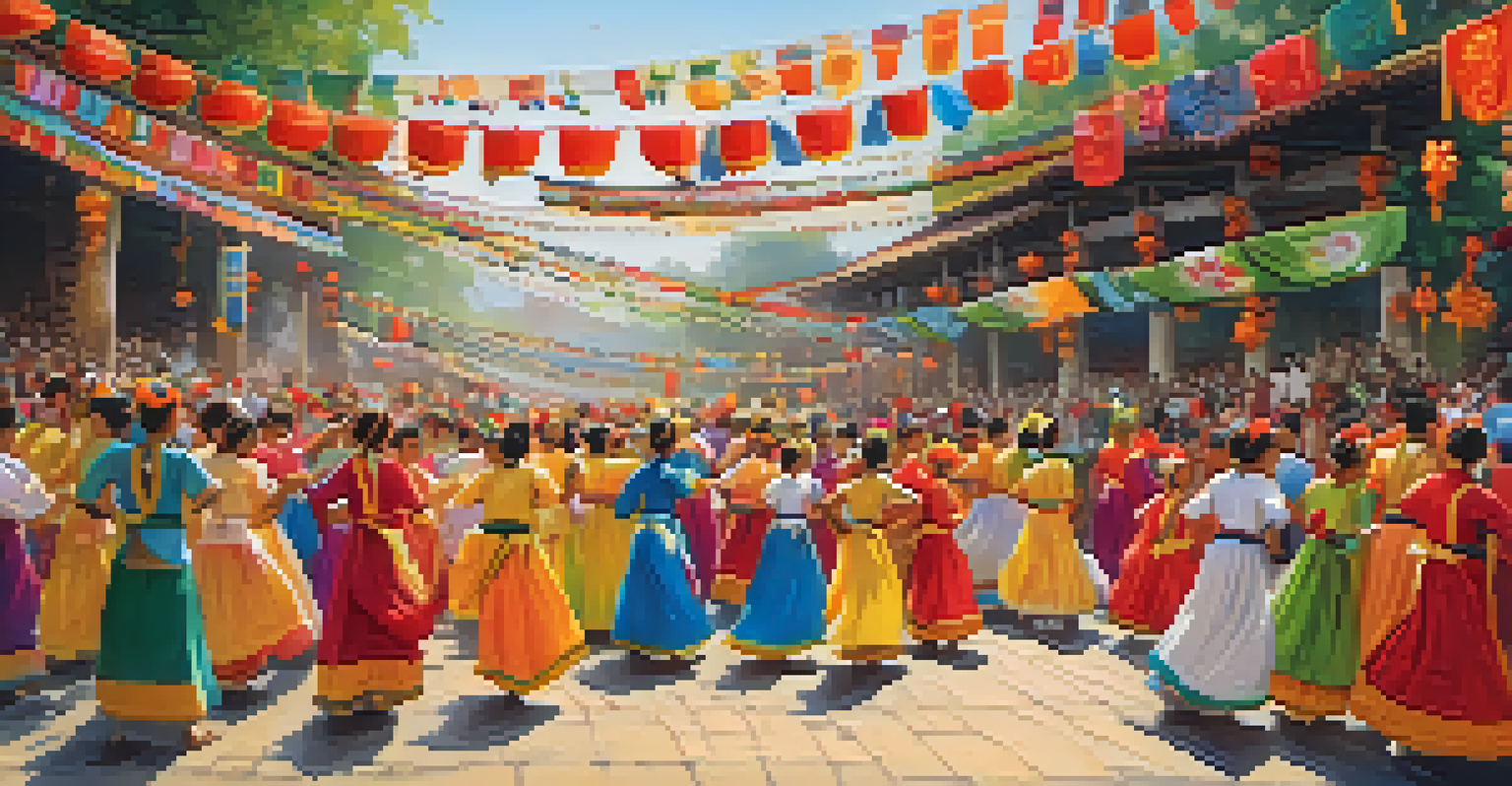Storytelling Through Travel Photography: Tips and Techniques

Understanding the Essence of Travel Photography
Travel photography is more than just snapping pictures; it’s about capturing the essence of a place and its people. Each photo should evoke emotions and tell a story that resonates with viewers. Think of your camera as a storytelling tool that can bridge cultures and experiences.
A photograph is the pause button of life.
To truly understand travel photography, consider what makes each location unique. Is it the vibrant colors of a marketplace, the serene landscapes, or the bustling city life? By focusing on these elements, you can create a narrative that not only showcases the beauty of a destination but also its character.
For instance, a photograph of a street vendor isn’t just about the food; it’s about the culture, the flavors, and the interactions. This understanding allows you to approach your travel photography with a mindset geared towards storytelling, making each capture meaningful.
Choosing the Right Moment to Capture
Timing is crucial in photography, especially when you’re trying to tell a story. The right moment can convey emotions that a static image might miss. Whether it’s the laughter of children playing or the stillness of a sunset, being patient and observant is key.

Imagine waiting for the right moment to capture a local festival. The excitement in the air, the expressions on people's faces, and the vibrant energy can all be captured in a single shot. This anticipation can transform a simple photograph into a vivid story.
Capture Stories Through Photography
Travel photography should evoke emotions and tell the unique stories of places and their people.
Always be ready to seize spontaneous moments, as they often reveal the most authentic stories. Sometimes, the best shots come when you least expect them, so keep your camera close and your eyes wide open.
Using Composition to Enhance Your Story
Composition is like the framework of your story; it guides the viewer’s eye and enhances the narrative. Techniques like the rule of thirds, leading lines, and framing can add depth and context to your images. By thoughtfully arranging elements within your frame, you create a more compelling visual story.
Photography is the story I fail to put into words.
For example, placing a subject off-center can create a sense of movement or lead the viewer’s gaze through the scene. This technique can be particularly effective in landscapes, where the vastness of nature can be emphasized.
Don’t be afraid to experiment with different angles and perspectives. Sometimes, a shot taken from a low angle or above can reveal layers of the story that might go unnoticed from eye level.
Incorporating Cultural Context into Your Photos
Every location has its own cultural narrative, and incorporating this context into your photography can enrich your storytelling. Understanding local customs, traditions, and daily life can help you capture images that reflect the heart of a place.
For instance, photographing a traditional dance at a local celebration can tell a story beyond the event itself; it showcases the community's values and heritage. By immersing yourself in the culture, you can find stories that resonate deeply.
Timing Enhances Emotional Impact
Choosing the right moment in photography can convey emotions that static images might miss.
Remember, it’s not just about the visuals but also about the stories behind them. Engage with locals, ask questions, and listen to their stories, which can provide inspiration for your photographs.
Creating Emotional Connections Through Your Shots
Emotion is a powerful element in storytelling, and travel photography is no exception. Images that evoke feelings—joy, nostalgia, wonder—can create connections with viewers. Consider capturing candid moments that express genuine emotions, as these can resonate more strongly than posed shots.
For example, a photo of a traveler marveling at a breathtaking view can inspire similar feelings in the viewer. This connection transforms a simple image into a shared experience, inviting viewers to feel as though they were there.
Always aim to capture the human experience. Whether it’s a smile, a moment of contemplation, or a burst of laughter, these emotional elements breathe life into your travel photography.
Editing: Enhancing the Story Without Overdoing It
Editing plays a crucial role in travel photography, allowing you to enhance your story while maintaining authenticity. The right adjustments can bring out the vibrancy of colors, improve composition, and even highlight emotional elements. However, it’s essential to strike a balance—over-editing can detract from the original narrative.
Consider using editing tools to refine your photos, but aim for subtlety. Enhancing natural colors and correcting exposure can make your images stand out without losing their essence. The goal is to amplify the story you’ve captured, not to create something entirely different.
Editing Should Enhance, Not Overdo
Effective editing enhances the story of your photographs while maintaining their authenticity.
An effective editing process respects the original moment while making it more impactful. Remember, your edits should serve the narrative rather than overshadow it.
Sharing Your Travel Stories with the World
Once you’ve captured and edited your travel photographs, it’s time to share your stories. Social media platforms, blogs, and photography websites offer fantastic avenues to showcase your work. By weaving narratives around your images, you can engage your audience and invite them to experience your journey.
Consider writing captions that provide context or share anecdotes related to each photo. This additional layer of storytelling can spark interest and encourage viewers to connect with the images on a deeper level.

Remember, sharing isn’t just about showcasing beautiful photos; it’s about inviting others into your experiences and inspiring them to embark on their own adventures.